Hailing from the mountains of New Guinea the Alocasia Wentii is a popular elephant ear plant that adds a bit of the tropics to your house plant collection. A focal point plant indoors, this Alocasia can, if you have the right climate, be grown outdoors with equally stunning effect.
Alocasia Wentii does produce flowers, but they’re not the plant's main attraction. The flowers are small and insignificant compared to the plant's distinctive foliage. The large, shield-shaped leaves with their glossy, dark green color and overtly purple undersides are the primary feature that makes this plant attractive to collectors and growers alike.
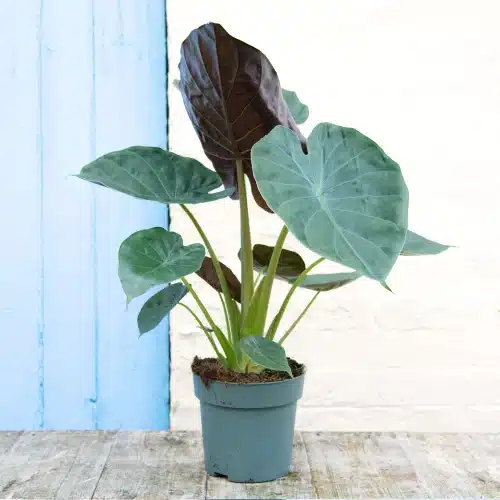
- What is the Alocasia Wentii Plant?
- Alocasia Wentii Overview:
- How Do You Care for Wentii Alocasia?
- What is the Best Soil for Alocasia Wentii?
- How Often Should I Water Alocasia Wentii?
- What are Alocasia Wentii Light Requirements?
- What is the Minimum Temperature for Alocasia Wentii?
- How Often Should I Fertilize My Alocasia Wentii?
- How Do You Prune an Alocasia Wentii?
- How Do You Propagate Alocasia Wentii?
- Alocasia Wentii Varieties
- Common Problems for Alocasia Wentii
- Interesting Facts About the Alocasia Wentii
- FAQ’s
What is the Alocasia Wentii Plant?
Alocasia Wentii is a species of flowering plant in the family Araceae. Sometimes referred to as the New Guinea Shield, Hardy Elephant Ear, or Purple Umbrella for its large dual-colored arrow-shaped leaves, dark green on the top and purple underside.
It’s a small plant by comparison to other elephant ear plants, but still, a formidable tropical plant reaching up to around 3 feet in height and equally as wide.
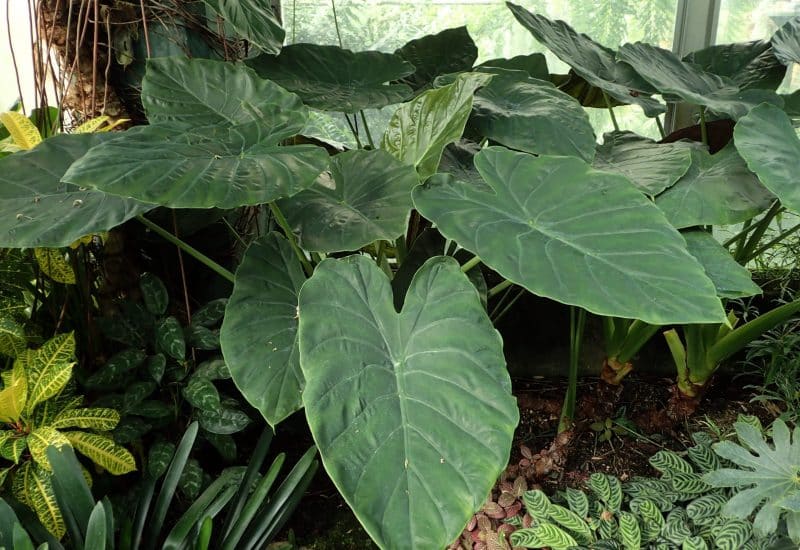
Originating in the hot and humid tropical forests of New Guinea, Alocasia Wentii prefers indirect sun and high humidity, a well-draining soil, and thrives with regular fertilization.
Alocasia Wentii Overview:
| Common Name: | New Guinea Shield, Purple Umbrella, Hardy Elephant Ear |
| Botanical Name: | Alocasia Wentii |
| Plant Type: | Tropical |
| Size: | 3 ft tall as a houseplant and equally as wide, leaves can grow up to a foot long, overtime up to 5 feet tall |
| Light: | Bright indirect sunlight, can tolerate early morning and evening sun directly, consider a grow light in the winter to prevent dormancy |
| Soil: | Aroid mix, porous potting mix, coarse potting sand, perlite |
| Water: | Don't over water, don't allow it to dry out completely |
| Vulnerabilities: | Spider mites and thrips, root rot and leaf fungus |
| USDA Growing Zones: | 8a-10b |
How Do You Care for Wentii Alocasia?
To care for Alocasia Wentii, provide it with moist, well-draining soil and partial shade to filtered sunlight. Water the plant regularly, allowing the soil to dry out slightly between waterings. Keep the humidity around the plant high, and avoid exposing it to cold drafts or temperatures below 60°F.
What is the Best Soil for Alocasia Wentii?
Alocasia Wentii prefers slightly acidic soil with a pH range between 5.5 and 6.5. A good soil mixture is one that drains well, is rich in nutrients, and is open and airy. A special aroid mix, or a blend of your favorite materials, such as coconut coir, coarse sand, perlite and bark chips, and worm castings will give your plant everything it needs to thrive.

How Often Should I Water Alocasia Wentii?
Alocasia Wentii prefers to be kept moist but not waterlogged. The frequency of watering will depend on factors such as the size of the plant, the type of pot, the humidity levels, and the temperature.
Alocasia Wentii should be watered when the top inch of soil feels dry to the touch. When watering, it's important to water thoroughly, but let the water drain out the bottom of the pot. The worst thing for this plant is to have the roots soaking in water.

If you are allowing the plant to go dormant in the winter, water requirements will change, but hopefully, you are able to maintain the correct climate so you can enjoy this plant year-round. Alocasia Wentii may require more frequent watering as it actively grows and produces new leaves.
Determining if the plant needs to be watered can be done by checking the top inch of soil with your finger, and if it's dry then it's time to water.
What are Alocasia Wentii Light Requirements?
Alocasia Wentii prefers bright, indirect light or partial shade. You can give some early morning sun or late evening sun but avoid direct sunlight in the heat of the day because the leaves are susceptible to sun scorch.
What is the Minimum Temperature for Alocasia Wentii?
Alocasia Wentii is a tropical plant that prefers warm temperatures and high humidity. The minimum temperature for Alocasia Wentii is around 60°F (15°C). Temperatures below this can cause damage to the plant, especially if they are prolonged or combined with low humidity levels.
Alocasia Wentii thrives in temperatures between 65°F and 80°F (18°C and 27°C), with humidity levels between 60% and 80%. If the temperature drops below 60°F (15°C), the plant may go into dormancy and stop growing until the temperature warms up.
How Often Should I Fertilize My Alocasia Wentii?
Alocasia Wentii benefits from regular fertilization during its growing season, which is typically from spring through summer. The frequency of fertilization will depend on the type of fertilizer used, the plant's size, and the pot size.
Fertilize Alocasia Wentii every 2-4 weeks using a balanced, water-soluble fertilizer, diluted to half strength. This will provide the plant with the nutrients it needs to support its growth and produce new leaves. Even though Alocasia Wentii is a heavy feeder, use caution when fertilizing, more does not always mean better.
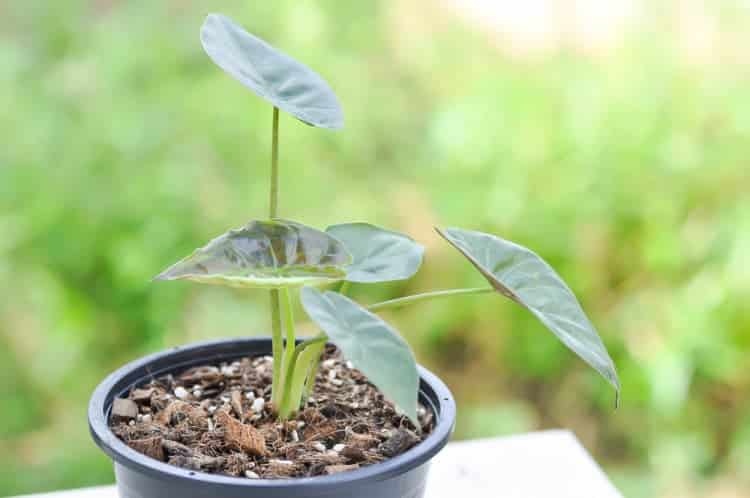
It's important to avoid over-fertilizing this plant. Too much fertilizer can actually burn the rhizomes and damage your plant, causing the leaf tips to turn brown or yellow and it can significantly affects it’s growth.
During the dormant season, Alocasia Wentii may require less frequent fertilization or no fertilization at all, as the plant slows down its growth. The dormancy period is usually during the fall and winter months when the temperatures drop.
It's also important to note that newly propagated or repotted plants should not be fertilized for at least 4-6 weeks to allow their roots to establish first.
How Do You Prune an Alocasia Wentii?
Pruning an Alocasia Wentii is generally not necessary, as the plant has a naturally bushy growth habit and will continue to produce new leaves throughout its growing season. However, if the plant becomes too large or crowded, or if it develops any damaged or diseased leaves, pruning may be necessary to maintain its health and appearance.
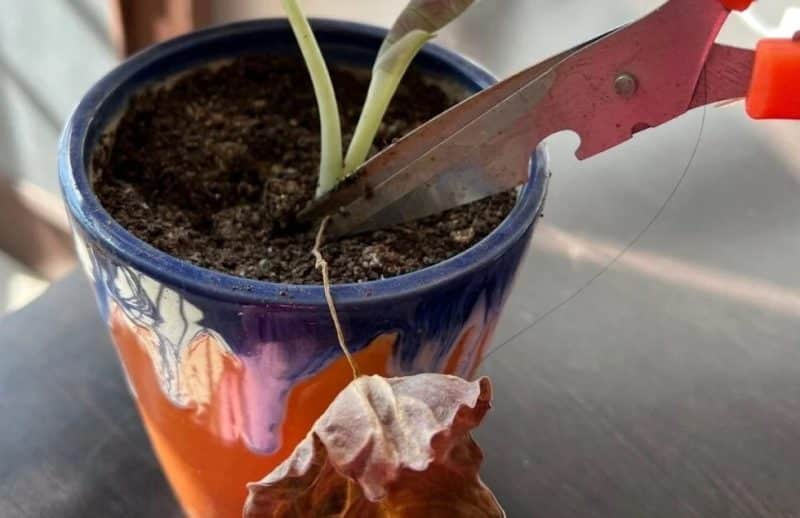
To prune an Alocasia Wentii, use a clean and sharp pair of scissors or pruning shears. You can remove any damaged, yellowed, or browned leaves, by cutting them at the base of the stem.
It's important to avoid over-pruning because this can stress the plant and make it more susceptible to pests and diseases.
How Do You Propagate Alocasia Wentii?
Alocasia Wentii can be propagated through division or stem cuttings. The latter will take considerably longer due to the cutting having to grow a whole new root system. Division propagation is a preferred method and can be easily done when repotting your plant.
After carefully removing the plant from its pot, you can remove the excess dirt from the root system by rinsing it off so you can get a better look. You may be able to pull apart the individual plants, but if it's necessary you can use a knife to cut the sections.

Now that you have your new cuttings you can plant each new plant into its own pot with well-draining soil and water thoroughly.
To propagate through stem cuttings, select a healthy stem with at least one leaf attached. Cut the stem at a 45-degree angle just below a node, which is where a leaf is attached to the stem. Dip the cut end of the stem in rooting hormone powder, and plant it in a small pot with well-draining soil.
Water the cutting thoroughly and place it in a warm, humid location with bright, indirect light. Keep the soil moist but not waterlogged, and mist the cutting regularly to maintain high humidity levels. After a few weeks, the cutting should start to produce new roots and leaves.
Propagation of Alocasia Wentii is best done during the plant's active growing season, which is typically from spring through summer. It's important to avoid propagating during the dormant season, as the plant may not have enough energy to produce new roots and leaves.
Alocasia Wentii Varieties
Alocasia Wentii belongs to the family Araceae, which includes a wide variety of tropical and subtropical plants. Some other plants in this family that have similar traits and needs to Alocasia Wentii include:
Alocasia Macrorrhizos: commonly known as Giant Elephant Ear, this plant has large, arrow-shaped leaves that can grow up to 4 feet long. It prefers bright, indirect light and moist, well-draining soil.
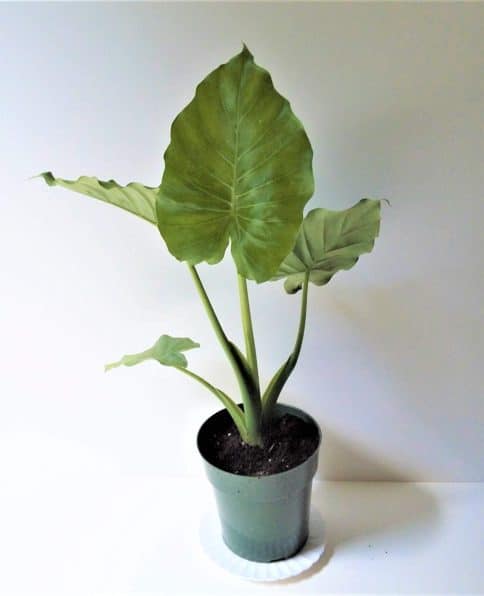
Colocasia Esculenta: also known as Taro, this plant has large, heart-shaped leaves and produces edible tubers. It prefers full sun to partial shade and moist, well-draining soil.
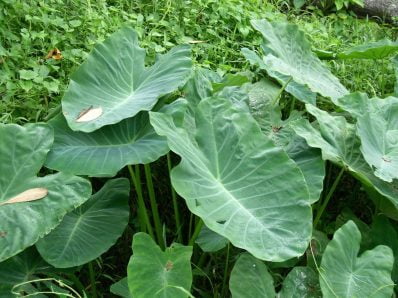
Xanthosoma Sagittifolium: commonly known as Arrowleaf Elephant Ear, this plant has arrow-shaped leaves that can grow up to 2 feet long. It prefers bright, indirect light and moist, well-draining soil.

Common Problems for Alocasia Wentii
Alocasia Wentii, as with most house plants can be susceptible to certain issues or common problems. Some common problems that you may encounter when growing this plant include, growth rate issues, diseases caused by overwatering, and household pests.
Growing
The growth rate of the Alocasia Wentii is by nature considerably slow, so avoiding any problems that slow the already slow process is important. It's very important to remember that over-fertilizing will not speed up the process. Maintaining the proper soil conditions, light and watering will assure the best growth rate for this plant.
Diseases
Disease is not generally an issue with this plant when all its growing conditions are properly regulated. Root rot and leaf fungus go hand in hand with watering and humidity conditions.
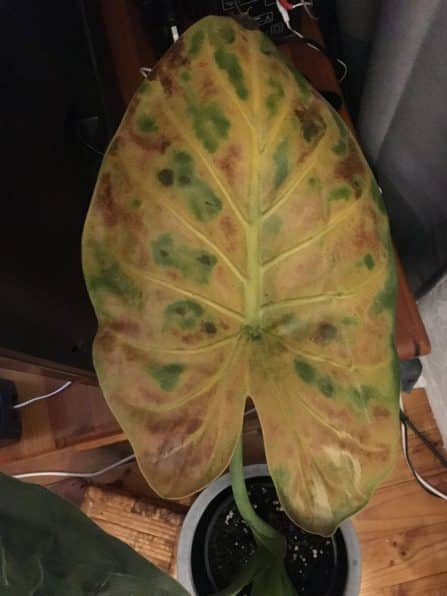
Pests
Like many indoor plants, Alocasia Wentii can be susceptible to pest infestations, such as spider mites or mealybugs. Many of the pest issues come when a plant is unhealthy due to conditions such as over-watering or excessive humidity.
Interesting Facts About the Alocasia Wentii
Here are a few interesting facts about Alocasia Wentii:
- The plant is native to the rainforests of Southeast Asia, where it grows in the understory of the forest. It is a member of the Araceae family, which also includes plants such as philodendrons, pothos, and peace lilies.
- This plant ddoesn’t have a super long life span, typically around 5 years, but because you can propagate it using the division method, you can always have a new plant growing.
- Alocasia Wentii is also known for its air-purifying qualities. Like many plants, it can help remove harmful pollutants from the air, making it a great choice for indoor spaces.
- The plant's large leaves are not only attractive but also serve a practical purpose in the rainforest. The leaves help to capture and channel rainwater down to the plant's roots, where it can be absorbed and used for growth.
- Wentii is named after the Dutch botanist F.A. Went, who collected the first known specimen of the plant in 1896.
FAQ’s
Is an Alocasia Wentii an Indoor Plant?
Yes, the Alocasia Wentii is an indoor plant but they have specific temperature and humidity requirements that need to be met in order for the plant to thrive.
Is Alocasia Wentii Rare?
The “Vintage Silver” Alocasia Wentii is considered a very rare species due to its unique variegations.
Is Alocasia Wentii Toxic?
Yes, it is both toxic to humans and pets. Ingestion or contact with the sap can require treatment.
How Tall Does an Alocasia Wentii Grow?
The Wentii will grow up to 5 feet indoors in a pot, but can reach a height of 10 feet when grown outdoors.
What is a Variegated Alocasia Wentii?
A variegated Alocasia Wentii is a plant with different color markings on the leaves. The variegation colors of some of these plants make them very rare species.

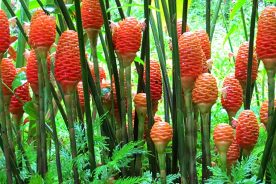

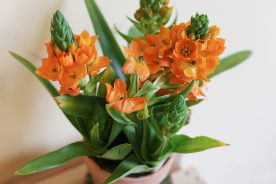

No Comments